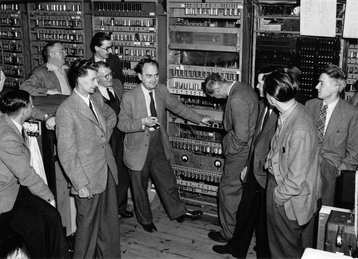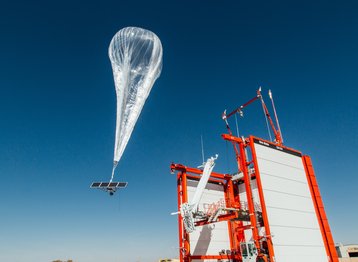In the latest issue of DCD Magazine, Editor Sebastian Moss uncovered an interesting fact: zebras may have enabled the Internet to reach into space.
It's a nice line. Zoologists tracking migrating zebras needed to capture data where mobile signal was scarce, so they created used a protocol to handle long delays. Those ideas are equally useful in another application with extremely long delays: communications with distant spacecraft. That's where delay-tolerant networking will come into its own.
The story shows up the seemingly random nature of progress in technology. We don't know which advances will succeed, where they will come from, and whether they will even be useful in future. People invent things almost at random, with ideas from multiple sources. And they usually face setbacks and turnarounds on the way.
Understanding how that process can work could be an important key to unlock future discoveries - but the stories link backward and forward through time, and the lessons aren't simple. This issue of the DCD magazine is a spider's web of related inventions.
Necessity is the spark
One of the people who spoke to us about DTN is veteran inventor Vint Cerf. You'll know him as one of the creators of the Internet itself, some 50 years ago. But the Internet came out of a defense project designed to create fault tolerant networks.
And some 30 years before that, our computing industry, like many other world-changing technologies, came out of urgent military needs, in the crisis of World War II.
The first programmable electronic computer was Colossus, built to crack enemy codes. It only did that one job, but it did that so well it shortened the length of the war, saving thousands of lives. And the next step was obvious, to make computers that could be reprogrammed simply to do different jobs.
The US-built ENIAC was the first of these, arriving in 1945, its first job was calculations for the atom bomb. But ENIAC still required physical rewiring to run any new program.
In 1949, EDSAC came to life in Cambridge UK, benefitting from advances in electronics created for wartime radar and radio. For the first time, ordinary people could approach a computer and load it with instructions in the form of software.
The first users weren't quite so ordinary of course, as we heard from retired professor Andy Herbert, who's spent ten years reconstructing a working replica of EDSAC at the UK's National Museum of Computing in Bletchley Park.
The first computer users were the University's mathematicians and scientists, making calculations that won the University's scientists three Nobel Prizes. And they were helped by the first programmers - an extraordinary cadre of well-educated women who stepped up to from previous roles including being "computers" - human calculating machines.
The spark of computing was quickly harnessed by industry: EDSAC was sponsored by a very British institution: J. Lyons, famed for its corner shop cafes, who commissioned the first business computer, Leo.
Keep failing better...
Some things about EDSAC and ENIAC never worked as well as they should. When their successors were on their way they were tossed aside as the pioneers moved on to newer and better things. And that's been a pattern we've seen repeated, in all parts of today's digital infrastructure.
Google's X Labs and spin-offs have seen plenty of failures, and one of the most interesting was the Loon project intended to bring Net access to underserved parts of the world using stratospheric balloons. Even though the system was due to be rolled out in various places, it didn't have a solid business model - and Loon was killed.
But some ideas will continue - the Loon balloon manufacturer is still open for others to try, and the automated systems it used to create high altitude networks are there ready for use in drones or satellites, or whatever succeeds it. Our lead feature shows just how widely a set of ideas and inventions can spread even when the central proposition fails.
Limits to invention?
It's not all good, however. The children of EDSAC, combined with today's Internet, have created a world with almost unlimited computing power and connectivity. We've seen that the products of untrammeled human ingenuity don't always work. It turns out they don't always help, and can sometimes be downright harmful.
Bitcoin and cryptocurrencies literally burn up cheap energy for speculation - an activity that is rewarded by our economic systems, but should be criminal, given the global climate crisis.
Restless minds are still trying to find valid business cases for the underlying blockchain, while others - ostensibly looking to solve bitcoin's waste of energy - have proposed a technology, Chia, which consumes storage instead. But the same goals, the same drivers, simply turn this into an excessive consumer of hardware as well as energy.
Tech inventors will always come up with new ideas. There's no guarantee they will produce things that help.
That's why, as soon as the pandemic lifts, and museums open again, we'll be heading to Bletchley Park, to glimpse the roots of creativity as a valve-powered giant which fathered our current digital world sparks back into life.



